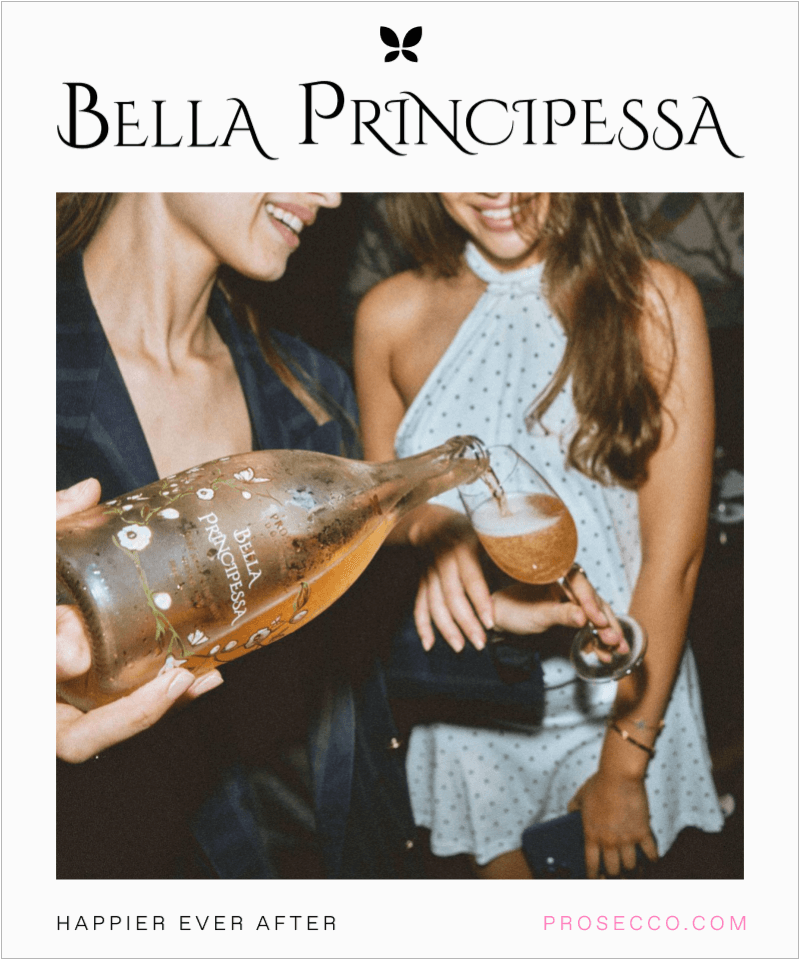The question “Is Prosecco a dry or sweet wine?” opens the door to exploring the diverse and nuanced world of Prosecco, a beloved Italian sparkling wine.
Prosecco’s varying sweetness levels make it a versatile choice, suitable for various palates and occasions, including offerings from brands like Bella Principessa Prosecco and Signorina Prosecco.
Understanding Prosecco’s Sweetness Spectrum
Prosecco is typically considered a dry wine, but its sweetness can range from medium to off-dry. The perception of sweetness in Prosecco is influenced not only by the actual residual sugar content but also by the fruity flavors inherent in the grape varieties used, such as green apple, honeydew melon, pear, and honeysuckle.
These natural flavors often give Prosecco an impression of being sweeter than its sugar content suggests. While sweeter versions of Prosecco are available, the best quality Proseccos are generally quite dry, with minimal residual sugar.
The Role of Residual Sugar in Prosecco’s Flavor Profile
The sweetness in Prosecco is typically measured in grams of sugar per liter (g/L), which determines the wine’s final taste profile. Prosecco’s versatility is evident in the different styles available, each with its distinct level of sweetness.
These varying levels of residual sugar contribute to the broad appeal of Prosecco, making it a sparkling wine that caters to diverse preferences. From the refreshing dryness of Prosecco DOC to the subtle sweetness of Prosecco DOCG, there is a variation to suit every palate.
Labeling and Classification of Prosecco
Prosecco labeling plays a crucial role in indicating the wine’s sweetness level. The classification ranges from brut (the driest) and extra dry to dry, with brut being the driest and containing up to 12g of residual sugar.
This labeling can sometimes be confusing, as ‘extra dry’ Prosecco, contrary to what the name suggests, is sweeter than ‘brut.’ Understanding these labels is key for consumers to choose a Prosecco that aligns with their taste preferences, whether looking for something drier like a brut or a sweeter variant.
Prosecco in the Global Wine Market: A Balance of Sweetness and Dryness
Prosecco has carved out a significant niche in the global wine market due to its balance of sweetness and dryness. Its approachable flavor profile and affordable price point make it popular among many consumers.
Brands like Bella Principessa Prosecco and Signorina Prosecco have capitalized on this balance, offering products that cater to the varying preferences of sparkling wine enthusiasts. Their success reflects a broader trend toward sparkling wines that are both high-quality and versatile in flavor profiles.
Prosecco’s Popularity and Food Pairing
Prosecco’s range from dry to sweet makes it an excellent choice for various food pairings. Its lighter, more fruit-forward profile, especially in the drier versions, pairs well with appetizers, seafood, and light pasta dishes.
The sweeter styles of Prosecco can complement desserts or serve as a delightful aperitif. This versatility is key to Prosecco’s popularity, making it suitable for casual gatherings and more formal celebrations.
Prosecco vs. Champagne: A Comparison of Sweetness
Compared to Champagne, Prosecco typically presents a fruitier profile and is often perceived as sweeter, although both wines can range in sweetness levels.
Champagne’s production method and grape varieties often produce a more complex and less overtly fruity profile than Prosecco. This distinction for consumers deciding between Prosecco’s light and fruity charm, such as that offered by Bella Principessa Prosecco, and the more traditional and often less fruity Champagne.
Conclusion: Navigating the Sweetness of Prosecco
In conclusion, Prosecco can be both dry and sweet, depending on the style and classification. The key to enjoying Prosecco lies in understanding its labeling and the impact of residual sugar on its flavor profile.
Whether one prefers the dry, refreshing taste of a brut Prosecco or the subtle sweetness of an extra dry variety, there is a Prosecco to suit every preference. Brands like Bella Principessa Prosecco and Signorina Prosecco offer a range of options within this spectrum, demonstrating the versatility and broad appeal of this beloved Italian sparkling wine.











